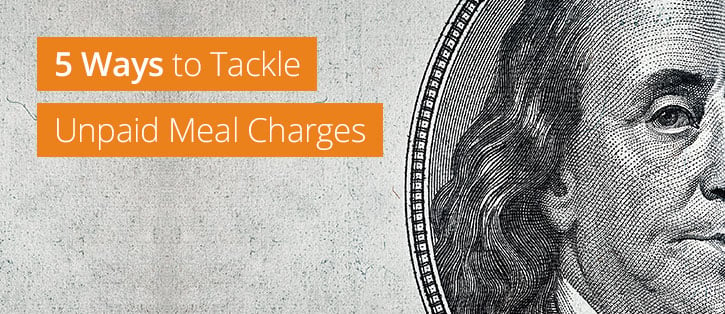
As food costs continue to climb and many families struggle to make ends meet, school districts across the country continue to see a rise in unpaid meal charges. In SNA's State of School Nutrition 2014 survey, nearly 71% of schools reported that their meal program had unpaid student meal debt at the end of the 2012-13 school year.
This uncollected debt can put schools in a tough financial situation at the end of the school year when shortfalls must be made up by the district, usually out of the general fund.
Worst of all, children are caught between parents that owe money to the school and nutrition programs that need it to run their operation and stay in the black. Certainly, no one wants a child to go hungry. But too much debt can put the financial health of districts at risk.
Despite the fact that there are no easy solutions to this very important issue, there are a number of things food service professionals and districts can do to reduce unpaid meal charges:
1. Establish a clear charging policy
If you don't already have a policy in place, this is one of the most essential components to keeping charges to a minimum. Typical policies include:
- Number of meals or dollar value that can be charged
- Notification procedure for parents (letter, phone call)
- Whether charges must be paid in full prior to additional charges
- If alternate meal will be served once charge limit is exceeded
- Method of payment recovery (collections, small claims court)
NOTE: Check with Federal, State and Local government agencies to ensure compliance with all regulations.
Once approved, make sure it is communicated to all district administrators, staff, and parents prior to its implementation. At the start of the school year use open house events, parent letters, and your district's website to get the word out.
Most importantly, hold your staff accountable and make sure the policy is enforced at every level to ensure its success. In point of sale systems such as Mosaic Cloud, charging limits can be setup and pushed out to all your serving line computers, helping to support your district's policy.
2. Increase Free & Reduced Participation
At the start of the new school year, parents typically have just 30 days to complete a new meal application before the prior year's benefits expire. Take advantage of this window to:
- Mail home a hard copy application
- Offer the application in multiple languages
- Let parents fill out their application with an online
Also, make sure returned applications are expedited to ensure new benefits kick in before the old ones expire, which can lead to more charges. Reach out to district staff and ask them to submit any applications they may have received on behalf of a parent or student.
If you have a high percentage of free and reduced students, your district may even be able to use Community Eligibility Provision (CEP). This allows all students to eat free, while reducing the administrative effort of collecting and processing meal applications.
3. Monitor students that might need help paying for school meals
If a student does not come to school with a meal, and repeatedly charges breakfast/lunch served in the cafeteria despite countless warnings, this may be the sign of a situation going on at home. In which case, school officials may want to see how they can assist.
The parents or guardian may also have not completed a meal application, even though the district knows the student is eligible for free or reduced priced meals. In this scenario, a school official may be able to apply for benefits on their behalf.
In some other cases, families may make too much money to qualify for meal benefits, but not enough to afford the cost of school lunch. Look to the community (PTA, local businesses/organizations, benefactors) to help raise money to put into a special fund to help repay some of the debt incurred by these students.
4. Notify parents when money is owed
When students do go in the negative, it's important to immediately notify parents so they can make a payment to eliminate the charge. Some online payment services like MySchoolBucks will automatically notify parents when meal account balances get low or go into the negative. But you can also send home letters, provide reminders to students, or use automated calling systems to communicate charges.
5. Encourage more meal prepayments
Getting parents to make more payments ahead of time can help prevent meals charged in the first place. Online payment services like MySchoolBucks make it easy for parents to view balances and make payments from their computer or mobile phone. You can also promote meal prepayments through flyers, letters and your district's website.
Regardless of how you approach this subject, it's always best to put the student first. Be sensitive to the circumstances some households may be in and work towards a policy that's fair and equitable for all parties involved.
Has your district been faced with increasing unpaid meal charges? What steps have you taken to resolve them? Share your experiences in the comments section below:








